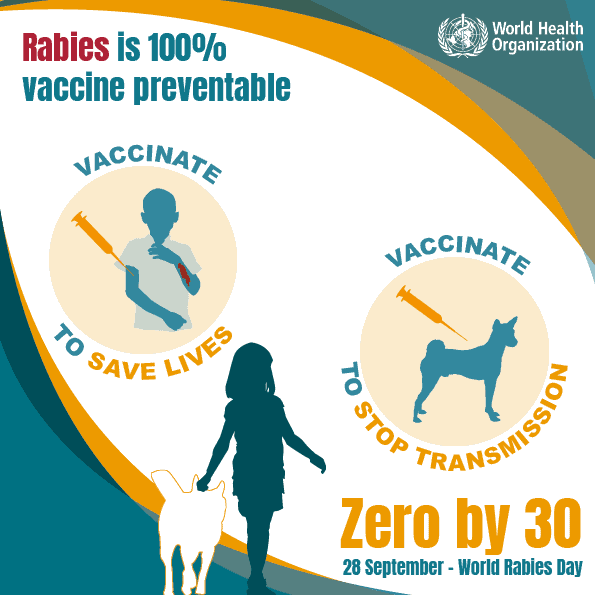
Rabies is a virus that is usually spread by a bite or scratch from an infected animal. The virus attacks the central nervous system and can cause inflammation in the brain, eventually leading to death. In principle, no human today should die from rabies, and yet rabies is responsible for an estimated 59,000 human deaths and over 3.7 million disability-adjusted life years (DALYs) lost every year.
That total is not as high as the death toll from tuberculosis, HIV/AIDS, and malaria; but, unlike those diseases, rabies seems able to infect all and every mammal species we know of. Dogs, the predominant host in most regions, can become infected from any rabid wild animal, and then infect humans.
The World Health Organization has made it a goal to eliminate human rabies deaths due to dog bites by the year 2030. An increase in dog rabies vaccination rates decreases dog rabies cases, human exposure, and human deaths, according to a new article in PLOS Neglected Tropical Diseases.
Implementing the goal of rabies elimination requires understanding the complex interaction between dog rabies vaccinations and human risk and response. Between 1995 and 2005, there was a rapid decline in dog and human rabies cases in seven Latin American countries following investments in both dog vaccination programs and human post-exposure prophylaxis (PEP) use.
New research by investigators from the School of Economic Sciences and the Paul G. Allen School for Global Animal Health at Washington State University, analyzed data from those seven countries — Brazil, Colombia, Peru, Venezuela, Nicaragua, Dominican Republic and Mexico. The data, compiled from reports published by the Reunión de Directores de los Programas de Rabia de las Américas (REDIPRA) from 1995 through 2006, included rates of dog vaccinations, dog rabies cases, reported human exposures, human PEP use, and human rabies cases.
The researchers found that a 10% increase in dog rabies vaccination rates decreases cases of dog rabies 2.3%. They add that this leads to a decline in how often humans are exposed to cases of rabies. At the same time, however, the reported number of cases of rabies stays constant or even increases — as more people report exposure to the same infected animal “which may result from higher rabies awareness due to anti-rabies campaigns,” the team notes.
While human exposures decline as dog rabies cases decline, exposures per dog rabies case increase, likely due to increased awareness. In addition, a 10% increase in dog vaccination leads to a 2.8% decrease in PEP use, and each 10% increase in PEP use decreases human deaths by 7%. Overall, a 10% increase in dog vaccination reduces human deaths by 12.4%.

“The findings highlight the critical importance of mass dog vaccination, heightened public awareness, treatment access, and the use of clinical algorithms to reduce both false negatives leading to death and false positives leading to costly unnecessary PEP prescriptions,” the researchers say.

World Rabies Day, observed on September 28 every year, aims to raise awareness about rabies prevention as well as highlight progress in defeating this horrifying disease. The day also marks the death anniversary of Louis Pasteur, the French chemist and microbiologist, who developed the first rabies vaccine.









